- Many people are now commuting by bike to avoid public transport, which offers a new opportunity for coworking spaces located near bicycle routes.
- It’s essential to offer suitable bicycle storage; without this critical piece of infrastructure, riders may find it difficult to justify commuting by bicycle to work.
- Not all bike racks are created equal, so it’s important to select the right infrastructure for your workspace. Here are 3 of them.
As more workers turn to bicycles for both fitness and their daily commute, being a bike friendly workspace is an attractive amenity to advertise to members. Key to supporting bicycle riding is ample and secure bike parking.
Without this critical piece of bike infrastructure, riders may find it difficult to justify commuting by bicycle to work.
If there is no suitable rack, cyclists may look to improper places to lock up their bikes such as against trees or fencing that blocks pedestrian traffic and becomes a nuisance. Or they may take their bike into the workspace, where the bike gets in the way of others or occupies precious space. Neither of these situations results in a good customer experience.
Not all bike racks are created equal, however, so it’s important for workspaces to select the right bike parking options.
The Association of Pedestrian and Bicycle Professionals (APBP), a community of practitioners working to create more walkable, bikeable places, recommends the following criteria for selecting bike racks that are functional for both short term parking and long term storage:
- Racks should support bikes upright without putting stress on wheels.
- They should accommodate different types of bike styles.
- They need to allow both the frame and at least one wheel to be locked to the rack with a U-lock.
- The actual bike rack material should stand up to long term use, like steel or stainless steel.
- They should be intuitive to use correctly, without written instructions necessary even for first time users.
Choosing the Best Bike Racks
A simple internet search for “bike racks” yields an overwhelming number of options and styles. Knowing which ones fit the criteria is not within the experience of most commercial property owners or workspace operators. Luckily, many regional bicycle coalitions are more than happy to share their recommendations to help encourage increased bicycle ridership and infrastructure in their areas.
Here are three highly rated bike rack styles to look for.
1. The “Inverted U” or “Hoop” Style

“As someone whose dominant transportation mode is a bicycle, crappy or nonexistent bike parking is one of my pet peeves,” says Eris Weaver, Executive Director of the Sonoma County Bicycle Coalition. “The best rack, in my honest opinion, is the inverted U.”
The general recommendation for picking a good bike rack is, the simpler the better. It doesn’t get any simpler than the classic inverted U, a bike rack that looks exactly like its name implies — an upside U of metal that can be fixed to the ground.
Why is this one the best for bicycle riders? According to the Outdoor Design Group in Colorado, “it provides two stable points of contact to lean their bike; the bike frame can be placed close to the pipe for easy locking and securing (proximity is crucial when using a U-lock bike lock); and you can easily lock two average size/shaped bikes (one on each side) to one U bike rack.”
The inverted U rack is also comparatively inexpensive and can be installed as a single U or in multiples to provide for higher density parking, so it is super configurable to the needs of the location. Aesthetically speaking, variations on the U-shape that still offer the same functionality can be installed to highlight a more unique style.
2. Dock Style Racks
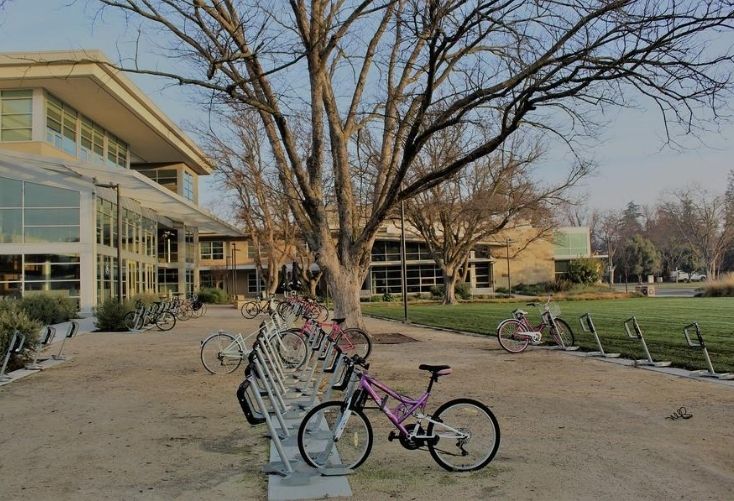
Another highly rated style is the dock style, which is another minimalistic design similar to the inverted U that can accommodate different types of bicycles for low and high density short term parking. These racks include a wheel well to stabilize the bike in addition to the rack to secure the bike with a U-lock.
This rack meets all the APBP criteria, is ADA compliant, and only needs a small footprint to create organized and efficient bike parking areas. It’s no surprise that this type of rack can increasingly be found on bike-friendly college campuses like the University of California, Davis.
3. Post and Ring Racks
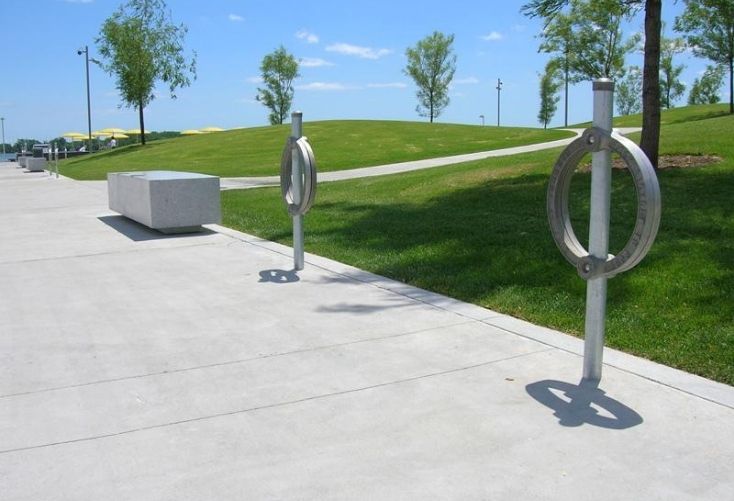
The final highly recommended bike rack style for outdoor bike parking is the post and ring rack. This rack has the smallest footprint compared to the inverted U and dock style and it only requires a single installation point. It lends a more modern look while also paying tribute to the traditional horse hitching post often found outside of stores in a bygone era.
Bike Racks to Avoid
There are, unfortunately, many examples of “bad” bike racks in use and in the market.
Not all bike racks are functional and convenient, either as a result of poor design, incorrect installation, or improper use. Bike racks that do not fully support the frame of the bike can lead to wheel damage if the bike falls over. If it is not easy to lock the bike to the rack, then the bike is not able to be left safely or securely.
Additionally, racks should not require the rider to lift up the bike, as that can keep some people from being able to use them properly, also risking damage or theft.
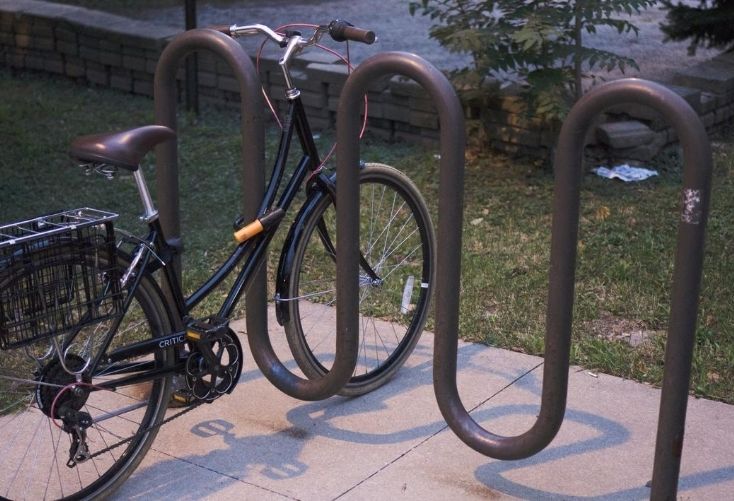
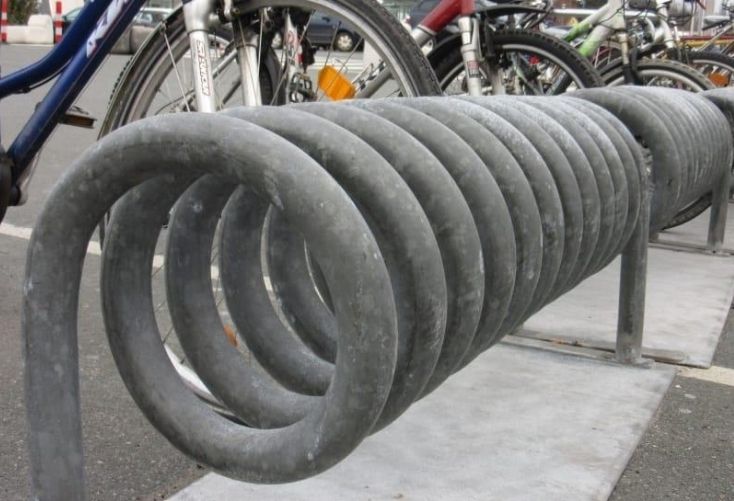
Publicly Available Bike Racks
If you are a workspace operator that isn’t able to add additional bike parking onsite, there may be nearby resources that can be used by your members, so it is worth knowing where and how your members may take advantage of them.
This can include public bike racks, or even large public bike garages such as the massive garage at the Amsterdam Central Station.
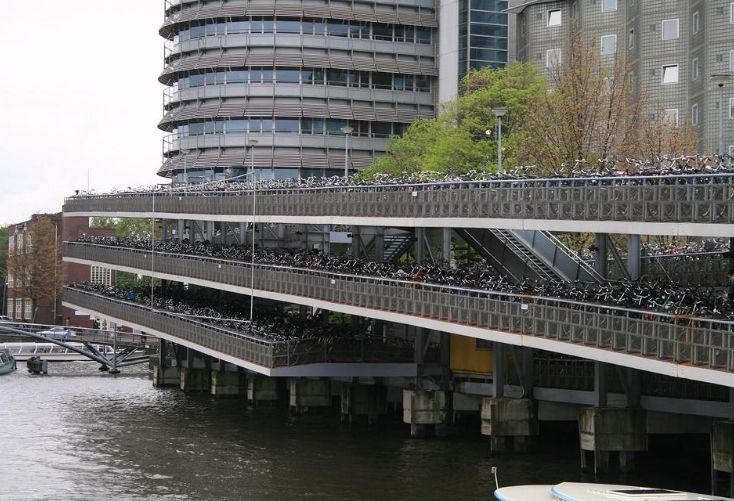
Local bike coalitions and advocacy groups can be an excellent resource for selecting the best bike racks as well as any other planning considerations that might be needed to get everything in place.
The importance of supporting bike infrastructure is underscored by Robert Nealan with the Lake Tahoe Bicycle Coalition who stated, “by making bike parking more accessible it supports a more vibrant community where cycling can become not just a viable, but preferred method of transportation and recreation.” Their coalition has helped provide 400 low-cost or free bike racks to businesses in the Tahoe region in the past three years.
Choosing the right bike storage for your workspace location is an important part of supporting and encouraging more workers to commute by bicycle. In order to become a truly bike friendly workspace, it is worthwhile to take the time to consider your choices carefully, to ensure you provide the right infrastructure for your current and future members.
Special thanks to Eris Weaver of the Sonoma County Bicycle Coalition for providing the APBP resources on good (and bad) bike racks.


 Dr. Gleb Tsipursky – The Office Whisperer
Dr. Gleb Tsipursky – The Office Whisperer Nirit Cohen – WorkFutures
Nirit Cohen – WorkFutures Angela Howard – Culture Expert
Angela Howard – Culture Expert Drew Jones – Design & Innovation
Drew Jones – Design & Innovation Jonathan Price – CRE & Flex Expert
Jonathan Price – CRE & Flex Expert













